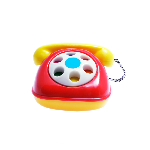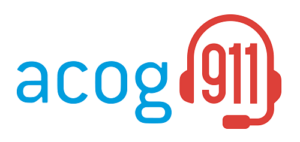
Robin Murray
9-1-1 ACOG Training Manager
After she was old enough to learn her numbers from one to ten, I immediately started teaching her about 9-1-1. She was too young to understand the specifics of certain emergencies so I told her that she should always come to her parents for help but if she needed help that mommy and daddy couldn’t provide, she could call 9-1-1. I didn’t have a toy phone in the house for her yet, so I took the batteries out of one of our cordless phones and had her practice calling 9-1-1. I would pretend I was the 9-1-1 operator who was answering her call. It was during one of these “play” sessions that I realized the next thing I needed to teach her was her address. Landline phone (the ones with the cords that plug into the jack) calls to 9-1-1 will show up with the address attached to that phone number, but cell phones do not show an exact address. Cell calls to 9-1-1 will map to the caller’s location, but it is not always the specific location.
After I taught her our home address, we were able to continue with our 9-1-1 lessons. I taught her that one of the first questions the 9-1-1 operator would ask her would be “What is your address?” I told her other questions the 9-1-1 operator might ask her would be:
- What is your name?
- What kind of help do you need?
- Is there anyone else in the house with you?
After “playing” 9-1-1 calls for a while, my daughter wanted to call the real 9-1-1. She wanted to talk to the real hero who was going to help her if she needed it, not mommy pretending to be the hero. I called our local police department on their seven digit non-emergency line and explained to the dispatcher that I had been teaching my toddler about 9-1-1 and she wanted to see what it was like to make a real 9-1-1 call. The dispatcher was wonderful and told me they weren’t busy right then, so it was okay to have my daughter make a real 9-1-1 call. The dispatcher also explained to me that if a real emergency came in when she was on the phone with my daughter, she would have to disconnect and handle the other 9-1-1 calls. When my daughter actually got to call 9-1-1, her face lit up with joy. She spent two or three minutes talking to the dispatcher. The dispatcher must have asked my daughter if she had any pets because I heard her telling the dispatcher all about our dog and how the dog will try to steal her stuffed animals and rip them up. When my daughter hung up the phone with the dispatcher, I could see the pride and accomplishment in my daughter’s face. When her father got home from work that day, her call to 9-1-1 was the first thing she talked about. It was a great learning experience, for both mother and daughter.
In conclusion, if you are trying to teach your toddler about 9-1-1, here are some things that might help:
- Incorporate your 9-1-1 training early. As soon as your child is old enough to learn numbers, they are old enough to learn 9-1-1.
- If you are using an old cell phone to teach your child 9-1-1, make sure the cell phone is not charged. Even if you are not paying for service, any 9-1-1 call made on a working cell phone will connect to 9-1-1.
- Some children learn best through music or song. Try and make up a song using the numbers 9,1,1.
- Tell your toddlers that there is always someone there to answer 9-1-1, no matter what time they call.
- Try and teach your children their address as early as they are able to learn it.
- Don’t worry about teaching your children what an actual emergency is at this age. That will come when they get a little older. If a two or three year old feels the need to call 9-1-1, the dispatcher will want to find out why.
- When you teach a young child how to call 9-1-1, you are giving them a tool which will help build their confidence. Things are not as scary if you know you are going to be able to get help.
To learn more, contact Robin Murray, 9-1-1 ACOG Training Manager, (405) 234-2264.
